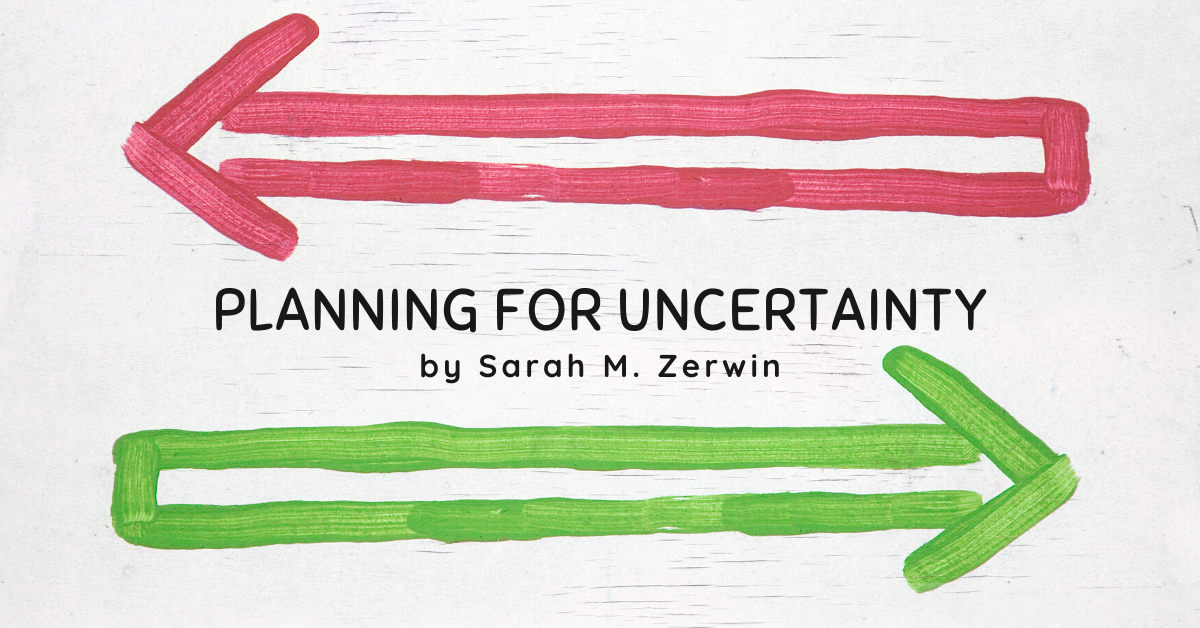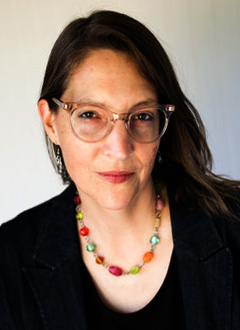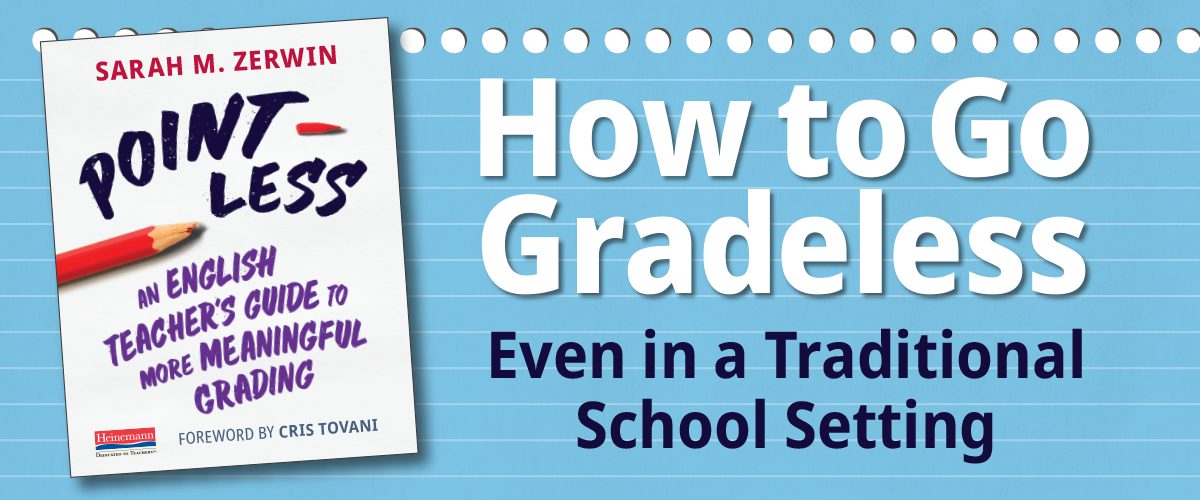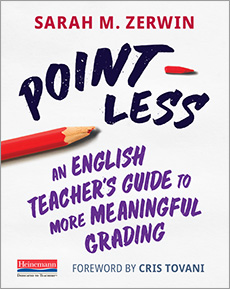
By Sarah M. Zerwin
According to my principal, we’re starting school with everyone back, in masks, socially distanced, arrows on the floor to direct student traffic. I’ll see each class in a 90-minute block every other day. Unless local conditions get worse—in which case we’ll be 100% online to launch the school year. And when it’s safe for us to be back in-person, it will be with cohorts of 10 students at a time.
I have never had to plan with this kind of uncertainty, and I’m quite anxious about all of it. But whether I’ll be teaching in-person, fully online, or in some kind of blended situation, it helps me to think about how six key beliefs developed over my 24 years in the classroom can guide my planning:
I’ll use every moment to connect with my students, learn who they are as readers, writers, and humans, invite them to form connections with each other, and help them to feel valued for who they each are.
1. Teaching and learning are about relationships first
If school starts in person, I will treat those days as if they are precious, sacred, and limited since we could shift to remote teaching immediately if conditions change. I’ll use every moment to connect with my students, learn who they are as readers, writers, and humans, invite them to form connections with each other, and help them to feel valued for who they each are. That means lots of whole-class and small-group conversation activities (see Liz Prather’s books for some that also generate writing ideas) and reading and writing together so I can assess where they are each starting.
If school starts online, I will turn to collaborative digital tools to accomplish the same things. Video conferences with breakout groups. Flipgrid videos. Online annotation tools to see what they’re thinking as they’re reading a text or to get into their thinking about their writing.
If we start in a blended context, then I have to think about which strategies for building connections with and among my students will work best in person and which ones have the best chance at being successful online. I can imagine reserving in-person time for conversation activities—when we can all share the same physical space and look each other in the eyes over our masks—and asking students to do some initial reading and writing work online. They can annotate in the margins to show me their thinking, and I can use digital tools to talk with them 1:1 about their work.
2. Accessing coursework and resources needs to be simple and straightforward
Even in my fully in-person classroom prior to March 13, 2020, everything my students needed to be successful in my class was easily accessible in one home base. In the early years of my career, this meant unit calendars on paper and notes on the chalkboard. In the last many years, I post everything online: weekly lesson plans, semester calendars, assignments, resources to complete assignments, everything. This online home base is even more important for school year 20-21. If everything is already online, and students know how to find and use it, then we can handle a sudden shift from in-person to remote learning.
One new (for me) thing I’m thinking about is doing all of my direct, whole-class instruction in the form of five-minute videos. Given a possible blended situation, I want to reserve limited in-person time for conversation, interaction, and instruction in small groups or individual conferences. Yes, it’s the classic flipped model (Flip Your Writing Workshop by Dana Johansen, Sonja Cherry-Paul is a great resource here). Students can watch and re-watch videos as many times as they need to.
None of this works if even one of my students can’t get to it. In the spring, my district provided devices and WIFI hotspots to students who needed them. I expect this work will continue, and if it doesn’t, I will speak up.
3. My students must be in charge of their own learning journeys
Traditional approaches to grading emphasize a power dynamic where the teacher controls the students’ destinies through the high stakes grade that hovers over everything they do. Students comply with teachers’ requests to earn points to cash in for grades. Instead, students can choose their own goals (from the curricular goals for a class) and chart their own path for learning—agency that invites more student engagement. At the end of the semester, they can write a story about what they learned and how they grew so they can see and understand their own journeys clearly. My descriptive notes in the grade book keep my students focused on their learning. Points and scores don’t tell me much that helps me teach students so they grow.
This is what I’ve written about in my book, Point-Less: An English Teacher’s Guide to More Meaningful Grading. I’ve had people ask me how I’ll approach it differently for remote or blended learning. What’s different is how I might engage students in the conversation about how traditional grading impedes their learning. But the rest of it holds true: students will focus on learning rather than point collecting if we shift our focus, too.
4. I can only plan so much before hearing from my students about what they need
In So What Do They Really Know, Cris Tovani reminds us that “unless I start with a little assessing, I’m teaching in a vacuum” (p. 112). I remember the ninth-grade class I met one year who showed me in the first days of school that they could do significantly more than the 9th grade class I had the year before. I re-imagined my plans for them, and I would have saved myself a lot of work had I waited to finish my curricular plans until after I had met my students!
It was my informal, kid-watching assessment that revealed my plans for my class were off the mark. But the remote learning of last spring stripped me of this teacher assessing super power. I couldn’t observe my students’ responses to the work because we were not in the same physical space. I had to ask them how the class was going for them. And I did. Every single week on a Google Form, using their responses to adjust my plans so the class worked better for them. Their weekly responses were so critical to my planning that I know I need to continue to ask each of them how it’s going, even when we are sharing the same physical space. Gholdy Muhammad reminds us in Cultivating Genius that “even teachers with the best intentions and practices are not the best people to speak for any student—the students must speak for themselves” (p. 65). Online or in person, I will seek students’ feedback regularly so I’m not making any assumptions about their experiences in my class. In this way, my students and I will co-construct the class together.
Online or in person, I will seek students’ feedback regularly so I’m not making any assumptions about their experiences in my class. In this way, my students and I will co-construct the class together.
5. Readers and writers will grow if they read and write a lot.
We show our students what to value based on how we spend time in class. I protect time for reading, writing, and talking with each other about that work. It’s the space where I can deliver individualized instruction through one-on-one and small-group conferences, teaching students while they are in the middle of actually reading and writing.
I will use any in-person opportunities for writing and reading time and conferences. These things are just harder to do online. But I have ideas if we’re completely remote. I can offer online reading and writing sessions where we all work on our own together. I greet them, we each get to work, and I see them reading or writing in all those little boxes on my screen. I can coach them on the wonders of being able to find a great spot to sit outside to read or write—something they can’t do when trapped in a school building all day. I can set up a schedule for conferences via video chat and provide office hours for drop in conversations. It’s not ideal, but keeping this belief at the forefront of my planning helps me to find the best online spaces for reading, writing, and talking about it.
6. Be flexible.
Every year I seem to find ways to bring in more choice to my classroom. Swapping out a few whole-class reads for smaller book club experiences, for example. Or moving more toward writer’s workshop. But when we went online in the spring, my students helped me access a layer of choice that was next level for me.
When I asked students each week how the class was going for them, a few told me that the work I had planned was overwhelming. Our focus was already narrower than what we were going to do together to finish out the year. But for some students, it was still too much given their life circumstances under the trauma of a pandemic. So a paper we had already been working on became a choose-your-own-adventure affair. Simply giving them the choice—finish the paper or drop it to do something else—engaged them powerfully in the work they each ended up choosing to do. They had control over how they spent their time for my class, they chose work that was most meaningful to them each individually, and they were each able to find success, even under the chaos of the pandemic.
Last spring, my students had control over how they spent their time for my class, they chose work that was most meaningful to them each individually, and they were each able to find success, even under the chaos of the pandemic.
Keeping these beliefs in mind will help me to cut through my anxiety about planning to teach in the context of unprecedented uncertainty. Even if distanced from my students physically, I can still craft a classroom experience that invites my students to do the important work of reading and writing. And maybe I’ll even see ways to do things better than I did before the pandemic hit. My hope is that I’ll come out on the other side of this experience with a classroom that is kinder and more flexible to welcome each of my students exactly as they are.
•••
Are you a fan of podcasts? List to our conversation with Sarah Zerwin about her book Point-Less: An English Teacher’s Guide to More Meaningful Grading. 
 Sarah M. Zerwin is a high school English teacher at Fairview High School in Boulder, Colorado. In over 20 years in the classroom, she has taught high school in a variety of settings as well as methods courses to college students. A national presenter, Sarah also works with teachers through the Colorado Writing Project. She seeks the best ways to invite her students to read and write for reasons that matter to who they are as human beings.
Sarah M. Zerwin is a high school English teacher at Fairview High School in Boulder, Colorado. In over 20 years in the classroom, she has taught high school in a variety of settings as well as methods courses to college students. A national presenter, Sarah also works with teachers through the Colorado Writing Project. She seeks the best ways to invite her students to read and write for reasons that matter to who they are as human beings.
References:
Johansen, Dana and Sonja Cherry-Paul. 2016. Flip Your Writing Workshop: A Blended Learning Approach. Portsmouth, NH: Heinemann.
Muhammad, Gholdy. 2019. Cultivating Genius: An Equity Framework for Culturally and Historically Responsive Literacy. New York, NY: Scholastic.
Prather, Liz. 2019. Story Matters: Teaching Teens to Use the Tools of Narrative to Argue and Inform. Portsmouth, NH: Heinemann.
Tovani, Cris. 2011. So What Do They Really Know? Assessment that Informs Teaching and Learning. Portland, ME: Stenhouse.
Zerwin, Sarah. 2020. Point-Less: An English Teacher’s Guide to More Meaningful Grading. Portsmouth, NH: Heinemann.




